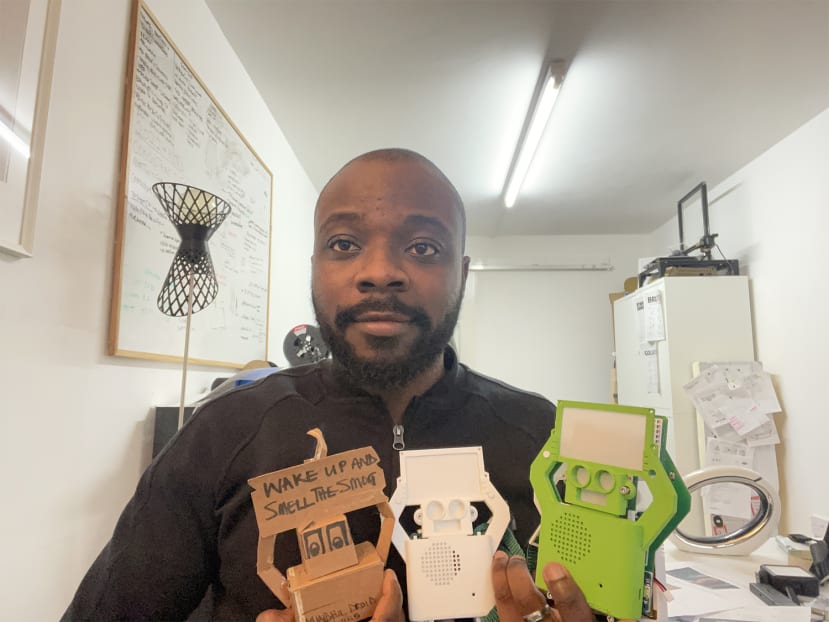Mindful Droid: Vlog 5 - What’s wrong with the Mindful Droid?
Follow articleHow do you feel about this article? Help us to provide better content for you.
Thank you! Your feedback has been received.
There was a problem submitting your feedback, please try again later.
What do you think of this article?
In an exciting update, I received a package marked "Mindful Droid," signifying the beginning of phase two of the Mindful Droid project. Before delving into the details of this new phase, let's take a moment to recap the accomplishments and features of the Mindful Droid in phase one. In this blog, I will provide an overview of its design, functionality, and the envisioned transition for phase two.
Phase One
I had the privilege of creating two versions of the Mindful Droid. Although they shared similarities, slight variations distinguished them from each other.
Design and Purpose: The first Mindful Droid was a work in progress, an early-stage minimum viable product (MVP). Its appearance was characterized by its simplicity, showcasing an array of addressable LEDs. These LEDs displayed awareness messages, such as smiley faces indicating pollution levels, serving as an alert system.
Functionality: The Mindful Droid worked in conjunction with an air quality monitor, acting as its receiver. It used sensors to collect data on carbon dioxide, nitrogen oxide, and carbon monoxide levels. This enabled users to monitor both indoor and outdoor pollution. Moreover, users had the ability to personalize the device by inputting their own messages, encouraging passive engagement with individuals who might not be aware of the issue.
Impact and Potential: By wearing the Mindful Droid, particularly for school children during their daily commute, the device sparked curiosity and initiated conversations. Its aim was to raise awareness about pollution and encourage action. By visually representing pollution data and delivering personalized messages, the Mindful Droid became a conversation starter, urging individuals to ponder and question their surroundings.
Phase Two
Advancements and Objectives Inspired by the progress made in phase one, I eagerly embarked on phase two, addressing technical challenges and aiming for greater accessibility and inclusivity.
Technical Improvements: The second iteration of the Mindful Droid focused on enhancing usability and power efficiency. Unlike its predecessor, this version included a power switch for sensors, preventing battery drain. By re-evaluating the PCB board and sensor placement, I sought to streamline the device's structure, making it more user-friendly and less intimidating for those new to engineering and IoT.
Education and Empowerment: A primary objective of the Mindful Droid project is to empower users, especially young children, to learn about coding, programming, and IoT. I aim to simplify the entry-level steps required to create their own IoT devices, allowing them to grasp the fundamentals and gradually expand their knowledge. By ensuring the device is accessible and inclusive, with the hope of inspiring a new generation of creators and activist engineers
Future Enhancements: Moving forward, I plan to incorporate additional addressable LEDs to provide more informative and visually appealing displays. I am also exploring alternative power solutions, seeking a sustainable battery solution that offers longer life. Additionally, I aim to integrate modular sensors that consume less energy, contributing to a more sustainable and efficient device.
As I progress with the project, I will continue to share updates on the challenges, lessons learned, and the exciting advancements achieved in this new phase. The Mindful Droid project is fueled by a passion for positive change, aiming to raise awareness, drive action, and foster a sense of responsibility towards our environment. By creating devices that are accessible, informative, and visually appealing, I believe we can inspire individuals to care and actively contribute to addressing current emission and climate change issues.
Thank you for joining me on this journey, and stay tuned for more updates to come!
Follow Michaels's weekly progress in developing the Mindful Droid.



Comments